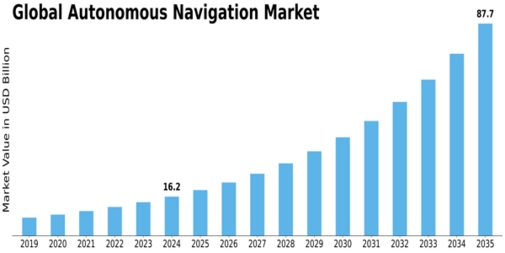Next-Generation Technologies Driving Smart Navigation Solutions

Autonomous navigation has become a central focus across defense, commercial, and industrial applications. With automation shaping logistics, transportation, and surveillance, industries are increasingly investing in navigation systems capable of operating independently in complex environments. These systems use artificial intelligence, machine learning, and sensor fusion to perceive, plan, and execute actions with minimal human input.
Market Expansion and Key Drivers
The Autonomous Navigation Market is witnessing consistent growth due to rising automation across air, land, and maritime platforms. Increased adoption of unmanned aerial vehicles, ground robots, and autonomous ships highlights the expanding applications of navigation technologies. Enhanced safety, reduced operational costs, and improved mission reliability are core factors driving this global expansion.
Innovation Through Integration
Integration of high-resolution sensors and real-time data processing is enabling advanced perception systems. The shift from semi-autonomous to fully autonomous platforms relies on software-defined intelligence that can adapt to uncertain or dynamic environments. This adaptability ensures accurate localization and navigation, even in challenging operational settings.
Importance of Market Forecasting
Effective market forecasting supports investors and stakeholders in identifying demand patterns and technological adoption rates. Understanding future scenarios allows companies to align R&D investments and optimize product portfolios to meet global market trends.
Future Perspective
As digital infrastructure matures and cross-industry collaborations intensify, the market will continue evolving toward scalable, reliable, and intelligent navigation systems.
- Sports
- Art
- Causes
- Crafts
- Dance
- Drinks
- Film
- Fitness
- Food
- Jogos
- Gardening
- Health
- Início
- Literature
- Music
- Networking
- Outro
- Party
- Shopping
- Theater
- Wellness


